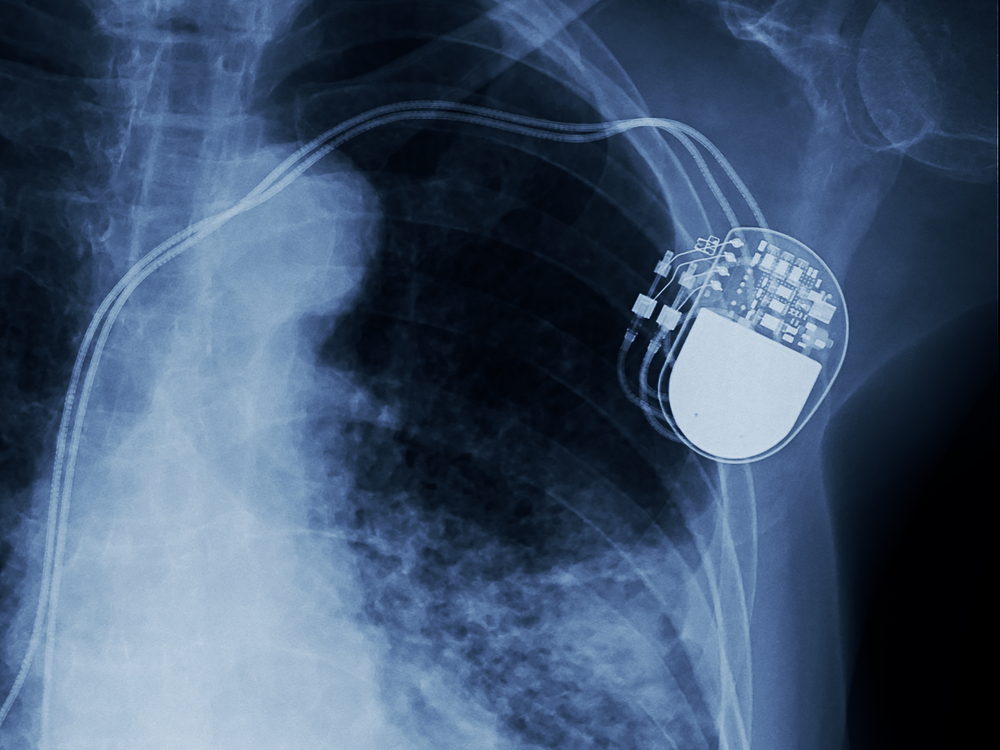Contents:
- Medical Video: Having a pacemaker
- Who needs a pacemaker?
- How do pacemakers work?
- Before deciding to install a pacemaker ...
- What are the procedures for installing a pacemaker like?
- What side effects might occur?
- Which must be considered after doing this procedure
Medical Video: Having a pacemaker
Some people may need to be paired with a pacemaker (pacemaker) to manage their heart functions that are not as good as they used to be. A pacemaker is a small device the size of a matchbox that is planted under the chest skin to control the heartbeat. So, who needs the device and what is the procedure for installing a pacemaker?
Who needs a pacemaker?
A pacemaker is an internal monitor system device mounted on the heart to measure electrical activity, pulse patterns, heart rate, and blood temperature pumped by the heart. However, not everyone needs to be paired with a pacemaker.
This tool will usually be attached to people who have problems with heart rhythm (arrhythmia). Arrhythmias occur when the heart beats either too fast (tachycardia) or it beats too slowly (bradycardia). The condition of severe arrhythmias can result in damage to other vital organs, even to death.
Installation of a pacemaker may also be needed for people who have heart block problems (slowing or disruption of electrical signals).
How do pacemakers work?
The heart should work endlessly to pump blood throughout the body with the help of a natural electrical system that tells when the heart chambers must contract. When there is a disturbance in the pulse pattern or its natural electrical impulses, the heart cannot beat normally.
Pacemakers work to mimic the actions of your heart's natural electrical impulses. To perform this function, the pacemaker is made of two parts:
- Generator. The shape is a small metal container that stores batteries to produce electrical circuits to regulate the electrical impulse sent to your heart.
- Tin cable (electrode) consisting of one to three flexible cables. Each is placed in your heart chambers. Its function is to channel electrical signals to adjust your heart rate.
The pacemaker also has sensors that detect body movements or breathing rates. If the pacemaker feels your heart is beating irregularly or too slowly, the device will send a signal at a steady pace to normalize your pulse. If the pacemaker feels your heart beat normally according to its rhythm, the device doesn't send any signals.
Installation of a pacemaker makes you do not need to go to the hospital often to check the heart condition.
Before deciding to install a pacemaker ...
The decision to install a pacemaker must certainly be with the doctor's approval. Before pairing it, the doctor will monitor your health condition and the drugs you are currently using, as well as your medical history. The doctor will also first undergo a physical test and check your heart as a whole.
What are the procedures for installing a pacemaker like?
Installation procedurepacemaker can be done through small surgery or major surgery. In many cases, minor surgery is more often chosen because it takes a little time and is less risky.
In minor surgery, you will first receive a local anesthetic under the skin of your left chest collarbone. The area was then slashed so that doctors could punch holes in the veins there. Through the blood vessels, the lead cable will be inserted and pushed until it enters the heart chamber.
After the lead wire is inside the heart, then it will be tested to make sure the location is right and functioning properly. There may be one, two, or three lead cables to enter, depending on the type of device the doctor chooses for your condition.
Meanwhile, the generator will be tucked through an incision under the skin just below the collarbone after the lead wire is attached to the generator. Generally, the generator will be placed on the non-dominant side. So if you are right-handed, the device will be placed in the upper left chest. If you are left-handed, the device will be placed in your right upper chest.
After all the pacemaker devices have been installed, the doctor will monitor their functions through the ECG. Including checking the battery function on the generator. After making sure the pacemaker is functioning properly, the doctor will close the skin incision with stitches, adhesive strips, or special glue. Finally, the location of the incision will be bandaged.
Because you only use local anesthesia, you will wake up consciously during this procedure. However, it will be very important for you to remain silent during the procedure so that the lead catheter does not move out of place and to prevent damage to the insertion site.
Minor surgery for the installation of a pacemaker usually lasts about one hour, or it can take longer if certain situations and conditions make the procedure more complicated.
Most people can recover quickly after this procedure in a day.However, you still have to consult regularly with your doctor for scheduled checks.
What side effects might occur?
The most likely side effects and the most common are redness and pain swelling at the location of the incision. This can happen as soon as possibleseveral days to weeks after surgery.
The pain is usually mild andcan be relieved by over-the-counter painkillers, such as paracetamol or ibuprofen. Make sure you consult with your doctor before taking painkillers.
Which must be considered after doing this procedure
After undergoing a pacemaker implant surgery, you must be aware of the potential for electrical signal interference from electronic objects, such as cellphones, microwave ovens, and metal detectors. Do not get close to electronic objects that emit radiation.
We recommend that you keep your handphone in a pants pocket rather than in a shirt pocket.
If you must enter a building with metal detection checks, such as airports, notify the authorized personnel that you have a pacemaker implant and ask for another method of examination because metal detectors can interfere with the pacemaker's work.












